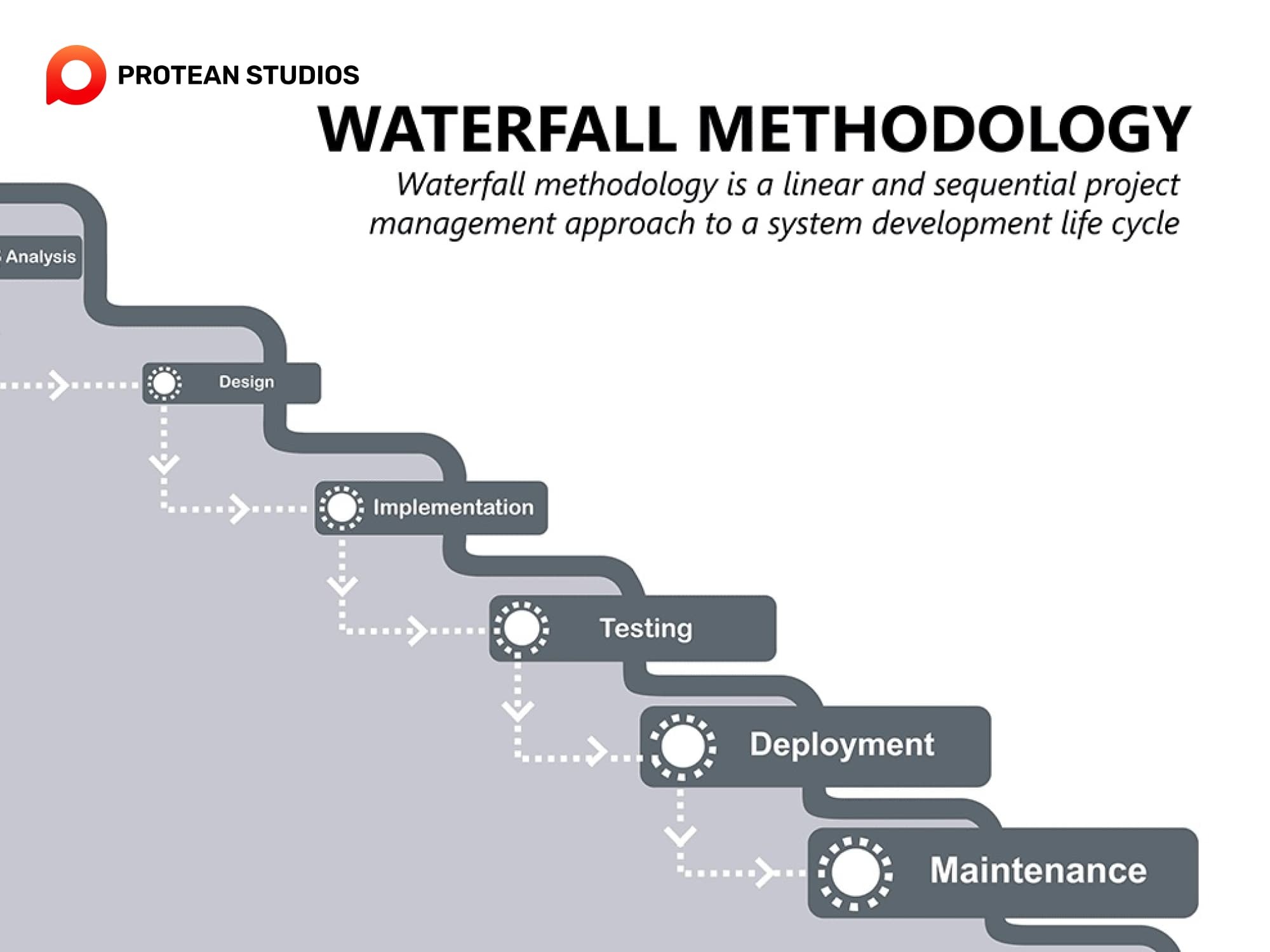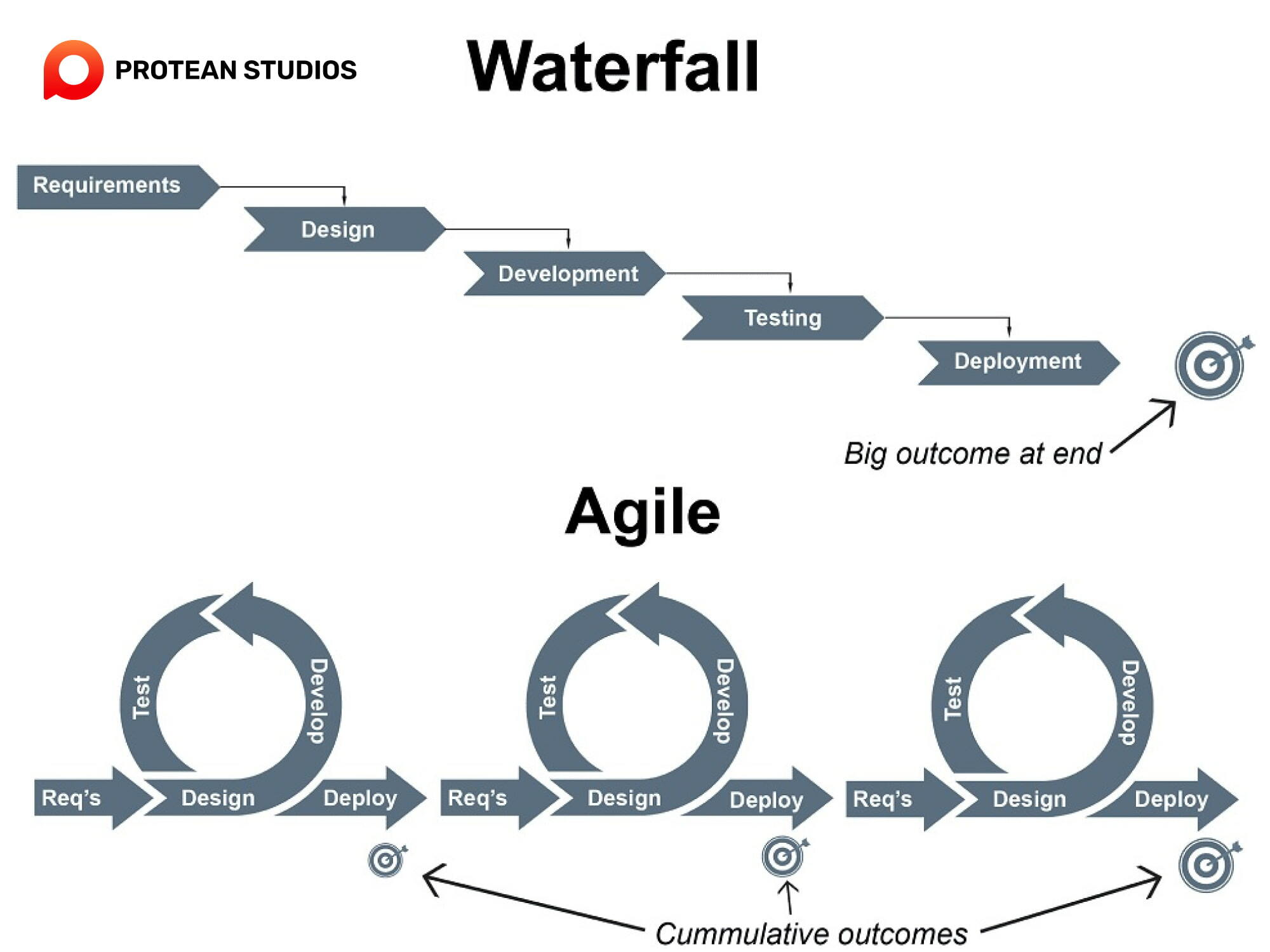In today's global business landscape, outsourced project management has become a prevalent strategy to optimize operations. Companies can take advantage of expertise and achieve optimal project outcomes. In this guide, Protean Studios will share four key project management methodologies for outsourced projects. Especially, we will give their principles, benefits, and activity ways to understand clearly.
I. What is project management for software development?
Project management for software development refers to applying specific principles, methodologies, and practices to a plan. And then execute and control the development of software applications or systems. It includes activities and processes that ensure the timely delivery of software projects. It is within budget and meets the specified requirements and quality standards.
III. The basic phases of project management
Project management involves a series of well-defined phases that guide the project from initiation to completion. These phases ensure that we approach the project effectively. It enables efficient planning, execution, and delivery of the project. Here are the fundamental phases.
1. Initiating
This phase marks the project's beginning, and companies will consider the project's purpose and feasibility. During this process, it's crucial to identify stakeholders' expectations, strategies, and objectives. Moreover, project cost estimation and resource allocation also take place. By the end of this stage, project managers should have detailed estimates essential for the project.

2. Planning
The second stage involves providing a detailed overview of the software development process. It encompasses various levels of project planning, which include:
Scheduling Project Timeline: Project managers establish the project timeline and set milestones to check the project's progress.
Resource Management: Project managers oversee the allocation of resources, both human and non-human. It depends on the predetermined estimates of time, cost, and effort.
Staffing: finding, hiring, and onboarding the appropriate talent for the project.
Task Management: In this phase, project managers identify tasks and assign them to each project team member. And then, track them throughout the project's lifecycle.
Risk Tracking: Addressing potential risks is a critical aspect of outsourced project management. It involves identifying and mitigating any risks that may arise at any stage in the software development life cycle (SDLC).
3. Development
This is where the project comes to operate. There are two stages: implementation and development. During implementation, developers code the software using chosen tools. But, in the development stage, they ensure the code works and meets quality standards.
4. Testing
At this point, quality assurance engineers start testing the developed code to ensure it meets the expected performance and quality standards. This step is crucial in project management as it provides confidence in the software product's readiness for release.
Read more: Unraveling Software Testing: Definitions, Models, And Types
5. Deploying
After code testing and bug fixes, it's time to deploy the software to production. This phase involves the necessary steps to transition the application into a live environment. This may include setting up hosting plans or configuring databases.
6. Delivery
The step in outsourced project management involves wrapping up the project. This includes documenting the entire process and collecting feedback from stakeholders to assess the project's success. We recognize everyone involved for their contributions. Moreover, we establish support and maintenance mechanisms to ensure the software operates smoothly.
7. After-service
The last phase is the ongoing support and maintenance provided after the project's completion. The support team will promptly fix bugs and issues, provide regular updates and enhancements, and offer training and documentation to users. The goal is to help maintain a good client relationship.
Finally, after-service ensures the smooth functioning, security, and longevity of the IT system. You can also use CMR software to check and define the customer's satisfaction.
II. List of Outsourced Project Management Methodologies
After understanding the process of project management, below are some common PM methodologies.
1. Waterfall
The waterfall method is a traditional approach to project management. It follows a clear, step-by-step sequence. Each phase needs completion before moving on to the next.
Waterfall’s phases are planning, design, development, testing, and deployment. It works best for projects with well-defined requirements and minimal expected changes.

A key benefit of Waterfall is its clear project timeline, costs, and deliverables. Yet, it can become rigid and cause delays if requirements change during the process. Moreover, the method doesn't promote team collaboration and communication, which can delay the project.
2. Agile Method
The Agile method is a flexible and iterative outsourced project management approach, especially in IT software development. It prioritizes delivering value to customers by breaking the project into small pieces. It means that teams can complete tasks within short iterations, referred to as sprints.

One of the advantages of Agile is its ability to be flexible and adapt to changing requirements. It also encourages strong collaboration and communication among team members and stakeholders. Here are common frameworks and methodologies within Agile.
Scrum: This is a popular Agile framework that stresses doing work in small, manageable parts. It includes small teams with different skills working together in short bursts, called sprints, to create usable pieces of the software.
Kanban: This method centers on making the workflow visible. It controls the amount of work at one time and boosts productivity. Kanban allows for flexibility in managing priorities and adapting to changes.
Extreme Programming (XP) emphasizes collaboration, frequent releases, and continuous testing and integration to deliver a high-quality product.
Lean: Focuses on delivering value to customers with minimal waste. The framework involves optimizing processes and maximizing value while minimizing unnecessary activities.
3. Hybrid Method
This method combines elements of both Agile and waterfall methodologies to tailor the approach according to specific project requirements. It allows for a structured approach while also incorporating flexibility and adaptability.
The design considers factors such as project size, complexity, and stakeholder expectations to suit specific project needs. By combining planning and adaptability, it offers a flexible and phased approach. Initially, it may use waterfalls for planning and design. After that, transitioning to Agile (e.g. Scrum, Kanban) for development and testing phases, especially when requirements evolve.

This hybrid approach balances control and flexibility, aiming for optimal project delivery and successful outcomes.
IV. Why choose outsourcing for software project development and management?
Outsourcing software project management and development brings cost savings, access to specialized skills, and faster project completion. It allows organizations to focus on core strengths while maintaining business activities and mitigating risks through expert collaboration.
Outsourcing enhances efficiency and customer satisfaction. thus making it a strategic choice for businesses. This is also the reason why many companies choose to outsource IT software projects.
In general, there are many outsourced project management methodologies that bring benefits to companies. Each method has its own pros and cons. So, depending on the company's goals, you can use a suitable type. If you feel interested in outsourcing projects, please contact us.
PROS has implemented many effective project management strategies. So, we can consult and offer the best solution for clients. Furthermore, when combined with our experienced IT and BrSE teams, we ensure to help customers complete their projects in the best possible way.




